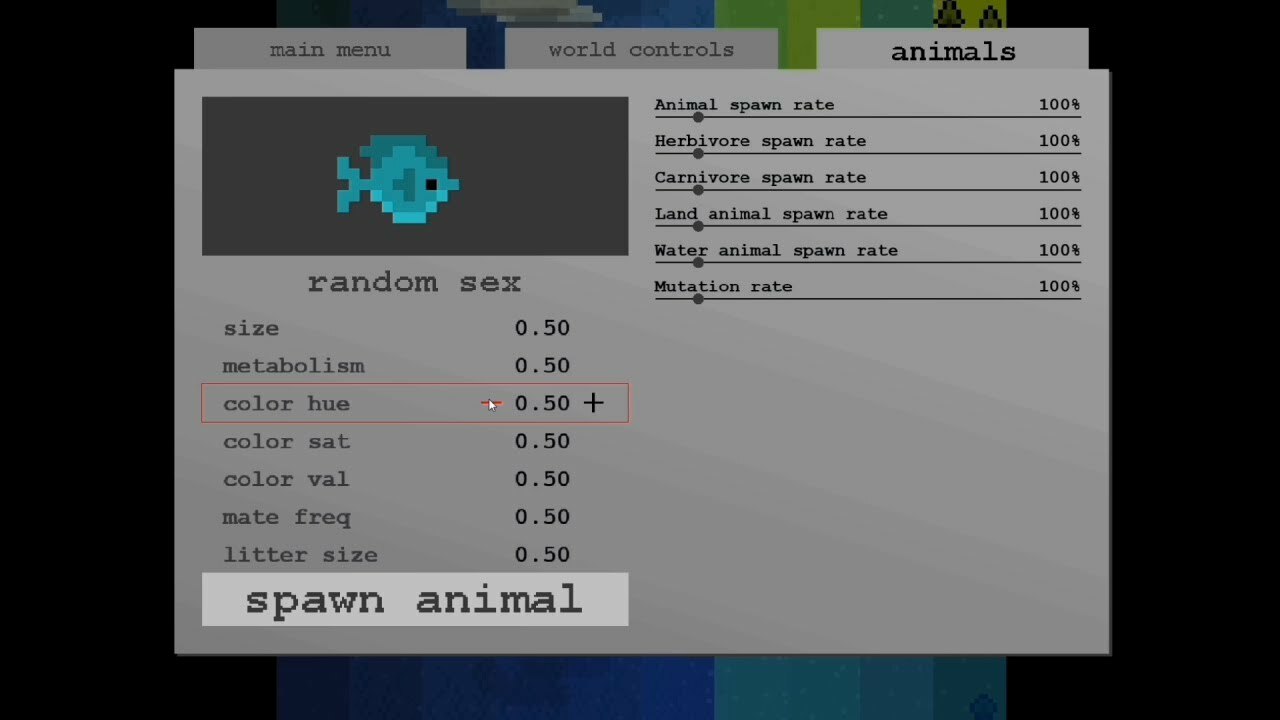- There are four species including the Crownfish (grazing fish), Barratuna (predatory fish), Buffalope (grazing land mammal), and Liger (predatory land mammal).
- The first three species are fictional but Ligers are actually real.
Ecology
- Plants provide food for the herbivores.
- Carnivores eat the herbivores.
- An abundance of food can cause a population boom. Overpopulation can result in starvation and mass dieoffs.
DNA and evolution
- Every animal has a “genome” (a list of 7 properties including size, speed, and color).
- All automatically-spawned animals (the ones that appear around the edges of the map) have a default genome. Animals born from sexual reproduction inherit the genes of their parents along with random changes (mutations).
- Certain genome values (like size and mate frequency) affect the ability of the animal to survive and to pass on its genes. This allows for a simple representation of natural selection to take place. For example, a fish might be born smaller and faster than its relatives and then survive to create a new population of fish that are better suited to their environment.
- Animal color is purely cosmetic. It is passed on genetically but it doesn’t affect the animal’s ability to survive. It’s just an indicator to help the player visualize genetic changes in a population.
Human-animal interaction
- Animals generally avoid humans, the one exception being starving carnivores (who will hunt humans and even cannibalize their own species).
- Humans don’t actively hunt animals. They will attack any animal they randomly come across and Gatherers will harvest the meat if they kill it, but this doesn’t happen too often since animals run from them.
Animals are better optimized for game speed than humans are.
There is a new tab on the main menu devoted to animals. You can change settings like spawn rate and mutation chance as well as spawn animals with a custom genome.


Changed files in this update